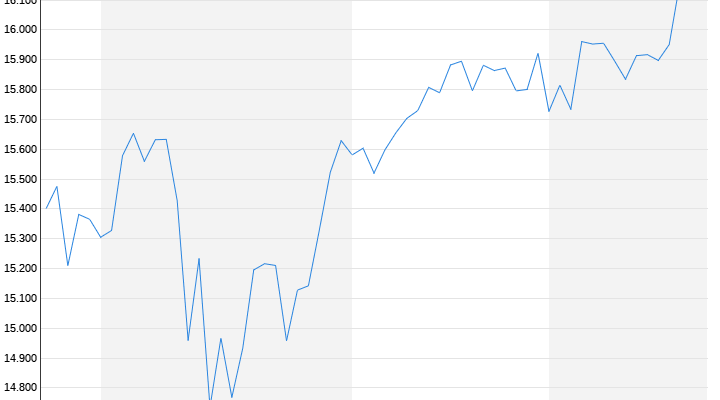German stock market left behind
Only the “Botox”-DAX creates the record
By Max Borowski
May 22, 2023, 5:07 p.m
The leading German index climbs to a new record high. However, the “real” DAX shows that the German stock market is lagging behind both the US stock exchanges and the European competition and is still a long way from reaching a record level.
16,331 points. The German stock market has reached a new record level – at least according to its leading index, the DAX 40. The index of the 40 most important companies listed in Germany, according to the selection criteria of Deutsche Börse, reached its previous all-time high of November 2021 at the end of last week. At the beginning of the new trading week, the DAX was almost at the record level. Some market participants believe that the index could even rise in the short term as some investors “chase” the market. That means they were surprised by the good development and are now buying more.
The price development appears surprising in several respects: The DAX has more than compensated for all losses since the at times dramatic crash as a result of the Russian attack on Ukraine. And this despite the fact that the energy crisis is keeping German industry in suspense, as can be seen from the discussion about a possible industrial electricity price and the debate about alleged deindustrialization. The leading German index has recently performed significantly better than international benchmark indices such as the European Stoxx 50 or the S&P 500, which reflects the American stock market.
Another striking feature: Although many German companies have recently earned well despite the weak economy, only a few shares in the DAX companies are trading at record levels. The contradiction can be explained by the fact that the DAX 40 in its form usually considered is a pseudo-giant in all these comparisons, a “puffed up Botox index”, as ntv stock market expert Frank Meyer puts it. The DAX in its most frequently quoted form is a performance index. In contrast to the listings of individual shares and international benchmark indices, it not only reflects the price development, but also includes all dividend payments.
A performance index such as the DAX is useful for showing the return on investments in this index, for example with a corresponding equity fund. If the DAX rises by a good 15 percent, as it has since the beginning of this year, this corresponds to the theoretical profit of an investor in a DAX index fund who has not paid out the dividends but reinvested them. For comparisons with individual stocks or international indices, on the other hand, the DAX price index would have to be used. And it does significantly worse.
“That’s fuel for the stock market!”
After all, the DAX price index had reached an annual high in April. However, that is more than 400 points below the record high that the index marked in autumn 2021 at almost 6900 points. The price index makes it clear that the German stock market lags far behind the American market, which is measured by price indices such as the S&P 500. “It also shows that the DAX has been left behind in comparison to its European brothers from the Stoxx family for five years,” says ntv expert Meyer.
How is the DAX going, whether from the record level of the performance DAX or the lower level of the price index? Experts expect that the rally in the past six months will make things more difficult for the stock market. “We now recognize that the hurdles for further equity investments have become higher,” says Marcus Hüttinger from the financial investor Gané in an ntv interview. Hüttinger refers, for example, to the rise in interest rates, which made life more difficult for “entire industries”. In addition, other asset classes have become more attractive again compared to equities due to the interest rate hikes.
Despite various risks, such as the debt dispute in the USA or inflation, Markus Sievers, Managing Director of Apano Investments, expects the stock market to remain high. “By the end of the year, a few more percent could come up,” says Sievers in an interview with ntv. He also points out that despite all the problems, companies are able to maintain their profit levels through efficiency gains. “That’s fuel for the stock market!”
